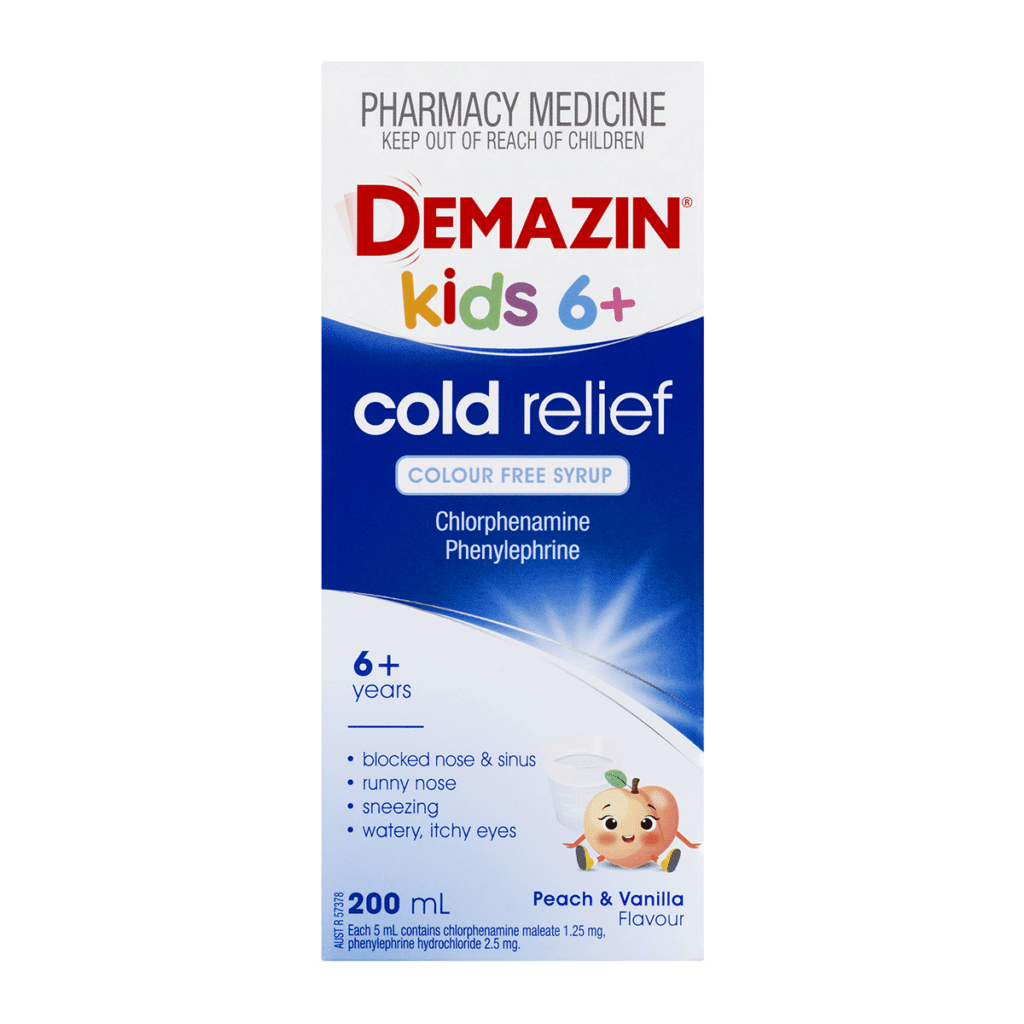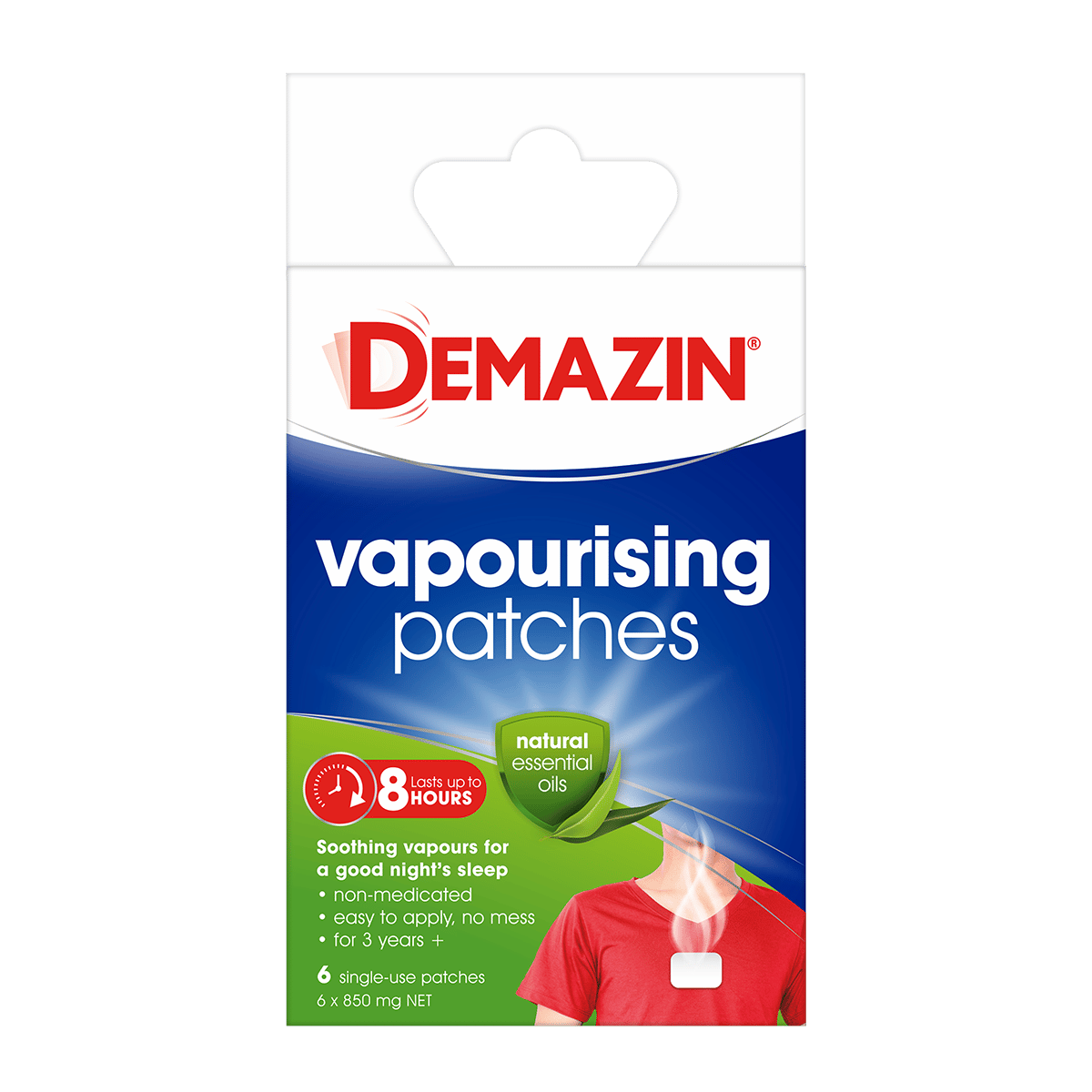Content missing
DEMAZIN Kids (6+) Cold Relief Blue Syrup - Peach & Vanilla Flavour
DEMAZIN Kids 6+ Cold Relief Blue Syrup Peach & Vanilla Flavour
- Size:
- 200 mL
DEMAZIN Kids 6+ Cold Relief Syrup is specifically formulated for children over 6 years and adults to provide temporary relief from runny nose, blocked nose and sinus, sneezing and watery, itchy eyes.
Uses:
- Provides temporary relief of cold symptoms.
- Runny nose.
- Blocked nose and sinus.
- Sneezing.
- Watery, itchy eyes.
Each 5mL contains:
Chlorphenamine maleate 1.25mg.
Phenylephrine hydrochloride 2.5mg.
Measure the dose using the medicine cup provided.
Age: Children 6-11 years.
How much: 8-15mL.
How often: Every 6-8 hours.
Max. daily dose: 32-60mL.
Age: Adults and children 12 years and over.
How much: 15mL.
How often: Every 6 hours.
Max. daily dose: 60mL.
After use:
– Rinse measuring cup with warm water and allow to dry.
– Replace the cap firmly.
Pharmacy Medicine. Keep out of reach of children.
Do not use this medicine:
– In children under 6 years of age.
– In children 6-11 years, except on the advice of a doctor, pharmacist or nurse practitioner.
– If tamper-evident seal has been broken.
See your doctor or pharmacist before use if:
– You have high blood pressure.
– You have heart problems.
– You are taking antidepressant medication, antihistamines or medicines intended to treat the symptoms of the common cold.
– You are pregnant, think you are pregnant or breastfeeding.
While using Demazin:
– If symptoms persist, see your doctor or pharmacist.
– This medicine may cause sleeplessness.
– This medicine may cause drowsiness. If affected, do not drive a vehicle or operate machinery. Avoid alcohol.
Contains Hydroxybenzoates, sugar, alcohol 6.4% w/v and sorbitol (6.3g/60mL). Products containing sorbitol may have a laxative effect or cause diarrhoea.
Products containing sorbitol may have a laxative effect or cause diarrhoea.
Frequently bought with

Cold & Flu Symptoms in Children: Similarities and differences

Kids Cold & Flu + Cough Syrups and Liquids
^Eccles R. Lancet Infect Dis 2005;5:718-725.






















